Research Article
Review
Case Report
Aim & Scope
Sabuncuoglu Serefeddin Health Sciences accepts in the field of health sciences.
· Letters to the editor
· Case report
· Review
· Original research articles
Aims and Scope
Sabuncuoglu Serefeddin Health Sciences (SSHS) is the
official journal of Amasya University Sabuncuoğlu Serefeddin Health Services
Vocational School.
The aim of Sabuncuoglu Serefeddin Health Sciences is to publish original research articles related to the highest scientific and clinical value in all medical fields. Moreover, SSHS also includes reviews, case reports, editorial short notes and letters to the editor that are related to recently published articles. The journal’s target audience includes researchers, physicians and healthcare professionals who are interested or working in all medical disciplines. The journal is a peer-reviewed, nonprofit scientific periodical. Three English-language issues have been published each year in April, August, and December. Processing and publication are free of charge for this journal. Statements or opinions expressed in the manuscripts published in the journal reflect the views of the author(s) and not the opinions of the Amasya University Sabuncuoğlu Serefeddin Health Services Vocational School, editors, editorial board, and/or publisher; the editors, editorial board, and publisher disclaim any responsibility or liability for such materials. Amasya University Sabuncuoğlu Serefeddin Health Services Vocational School holds the international copyright of all the content published in the journal.
All submitted papers will be pre-screened by the Editor to determine suitability for further review (e.g. correct format, area of interest).After the preliminary evaluation of the journal management board, it is accepted with the approval of atleast three reviewers. In case of delay on behalf of a viewer, the reviewer may be substituted by another. In case of excessive delay, the paper will be reviewed by members of the Editorial Board. Submitted articles cannot have been previously published, nor be forthcoming in an archival journal or book.
Sabuncuoglu Serefeddin Health Sciences is an International Journal is a double-blind peer-reviewed journal which is published three times per year.
Author Guidelines
* Manuscript should be prepared in accordance with the journal template. Manuscript template can be accessed from this link: https://dergipark.org.tr/tr/pub/sshs/page/9778
1.Title Page
A title page should be prepared for the manuscripts but is required to be uploaded separately to journal’s online manuscript submission system on as a supplementary file.
This page should include;
(a) the article's full title (English and Turkish): Titles of the manuscript should be concise, informative, centered and not exceed more than three lines. Titles should be bold, cambria style with 12 pt and written with capital letter. Abbreviations and the authors for scientific taxonomic names should not be used in the title.
(b) names, affiliations (institution name, department name, city, and country) and ORCID ID of all authors
(c) the name, email address, and telephone number of the corresponding author
(d) Research Type
2. Main Text
Main text, uploaded on manuscript evaluation system for referee evaluation, should start with the title of the manuscript, but must not include the names of author(s) and their address(es). All pages in each page of the manuscript should be numbered. The manuscript should be organized as following: Manuscript Title, Abstract, Keywords, Introduction, Materials and Methods, Results and/or Discussion, Conclusion (optional), Acknowledgement (if necessary), Abbreviations and/or symbols (if necessary), References, Figures (pictures, drawings, graphs, maps etc.) and Tables. All manuscripts should be written in Cambria style with 10 pt. Figures and Tables should be given after references. Manuscript including reference list should not be exceed 20 pages. It is essential that authors prepare manuscripts according to the journal’s established format and style Paragraph indents should be 0.5 cm. Main headings (Introduction, Materials and Methods, Results and/or Discussion, Conclusion) in the manuscript should be numbered in the order, written with 10 pt and bold letters as just first letters of each word in the main headings should be written with capital letters. Subheadings should be written with 10 pt lower case as italic but not bold.
Abstract
The abstract should contain less than 250 words. Literature citations should be avoided in the abstract. Abstract should be written with Cambria style, 10 pt. Abstract should provide a summary of the research, including the; Purpose, Methods, Results and Major conclusions. Following the abstract, 3-6 keywords should be given in alphabetical order. The first letter of the keywords should be written in capital letters, each keyword should be separated with comma, not used in the title, but describing the study and useful for a literature search. Authors may wish to consider using MeSH keywords.
Özet
The Turkish abstract should contain less than 250 words. Literature citations should be avoided in the abstract. Abstract should be written with Cambria style, 10 pt. Abstract should provide a summary of the research, including the; Purpose, Methods, Results and Major conclusions. Following the abstract, 3-6 keywords should be given in alphabetical order. The first letter of the keywords should be written in capital letters, each keyword should be separated with comma, not used in the title, but describing the study and useful for a literature search. Authors may wish to consider using TBT (Türkiye Bilim Terimleri) keywords.
1. Introduction
This part should precisely represent the aim of the research, the hypothesis to be tested, and explain the general approach and objectives by giving related published literature.
2. Material and Methods
Material and Methods used in the study should be given under this heading. If subheading would be given, it should be numbered with main heading number (for example 2.1.) and written in italic. A clear description of current, new or modified methods should be given to provide sufficient information and to allow someone to repeat the work. If a previously published method is used, relevant literature should be cited.
The ethical dimension of the research
***Submissions with a similarity index exceeding 25% are returned to the author. While uploading the manuscript file, the similarity report should be uploaded to the journal system by the author(s).
3. Results and Discussion
Results should be presented as concise and explanatory without interpretation, and complicated results should be explained by supporting with tables or figures. In statistical analysis, factors found to be significant should be presented by giving the details of experimental designs and statistical comparison methods. Editor may not consider the manuscript to evaluate when statistical analysis is wrong or insufficient. Results should be discussed comparing with the previous study results.
4. Conclusion
Obtained results should be presented as shortly and clearly by providing the reader scientific knowledge and practical contributions with a clear understanding of representative data obtained from the experiments. Duplicative words and sentences which are used in results and discussion sections or introduction should be avoided.
Acknowledgement
If necessary, a short acknowledgement for the help of all individuals or funding sources that have made a significant contribution during research and producing the manuscript should be expressed in this section.
Conflicts of Interest
Authors should include a Conflicts of Interest declaration in their manuscript. Conflicts of Interest are situations that could be perceived to exert an undue influence on an author’s presentation of their work. They may include, but are not limited to, financial, professional, contractual or personal relationships or situations. Conflicts of Interest do not necessarily mean that an author’s work has been compromised. Authors should declare any real or perceived Conflicts of Interest in order to be transparent about the context of their work. If the manuscript has multiple authors, the author submitting the manuscript must include Conflicts of Interest declarations relevant to all contributing authors.
Example wording for your Conflicts of Interest declaration is as follows: “Conflicts of Interest: Author A is employed at company B. Author C owns shares in company D, is on the Board of company E and is a member of organisation F. Author G has received grants from company H.” If no Conflicts of Interest exist, your declaration should state “Conflicts of Interest: None”.
Funding Statement
Authors must include a Funding Statement in their manuscript. Within this statement please provide details of the sources of financial support for all authors, including grant numbers, for example: “Funding Statement: This work was supported by the Medical Research Council (grant number XXXXXXX)”.
Where no specific funding has been provided for research, you should include the following statement: “Funding Statement: This research received no specific grant from any funding agency, commercial or not-for-profit sectors.”
Authorship
The SSHS follows the recommendations of the ICMJE, as such a contributing author should be considered to have;
a) made a substantial contribution to the conception and design of the study; or the acquisition, analysis, or interpretation of data in the work;
b) made a substantial contribution to the drafting of the manuscript and/or critical revision for important intellectual content;
c) provided final approval of the submitted manuscript, and;
d) agreed to be accountable for all aspects of the work in ensuring that questions related to the accuracy or integrity of any part of the work are appropriately investigated and resolved.
Authors are responsible for determining authorship and as such SSHS will not enter authorship related discussions or arbitrate authorship disputes. All authors should collectively determine who is to be an author or acknowledged contributor. This authorship list must be finalised before submission of the manuscript to SSHS. There is no limit to the number of authors a manuscript may have as long as the above requirements are met in all cases.Individuals who meet some but not all of the criteria described above can be acknowledged as contributors at the end of the manuscript with their contribution specified.
References
References should be prepared according to the Publication Manual of the American Psychological Association (6th edition). All references cited in the text should also exist in the reference list (and vice versa). The reference list should be organized alphabetically by considering the authors’ surname. References in the text should be written according to the author-year concept and arranged for years (Yilmaz, 2010; Engelen et al., 2018; Rowland & Kuper, 2018). References from the same year but with different authors should be arranged alphabetically (Engelen et al., 2018; Rowland & Kuper, 2018). More than one reference from the same author(s) in the same year must be identified by the letters 'a', 'b', 'c', etc., placed after the year of publication. Web references are recommended to be limited. Authors should not be cited unpublished results and personal communications unless it is necessary. Footnotes should be avoided. If necessary, they may be given shortly at the end of the page where their positions are indicated by asterisk in the text by separating a horizontal straight line. Examples;
Journal article with single author;
Lukose, A. (2011). Developing a practice model for Watson's Theory of Caring. Nurs Sci Q, 24(1), 27-30. doi: 10.1177/0894318410389073
Journal article with multiple authors;
Adams, R.N., Mosher, C.E., Cannady, R.S., Lucette, A., & Kim,Y. (2014). Caregiving experiences predict changes in spiritual well-being among family caregivers of cancer patients. Psychooncology, 23(10), 1178–84. doi: 10.1002/pon.3558
Book;
South, J., & Blass, B. (2001). The future of modern genomics (1st ed.). London: Blackwell.
Book chapter;
Cotter, V.T., & Foxwell, A.M. (2015). The meaning of hope in the dying. In: Oxford Textbook of Palliative Nursing (4th ed.) (pp. 10-21). Ferrell, B.R., Coyle, N., & Paice, J.A. (Eds.), New York: Oxford University Press.
Internet Document;
WHO. (2019). Palliative care. (cited: 2020, January 14) Retrieved from: https://www.who.int/health- topics/palliative-care
Reference to a conference paper;
Yilmaz, S., Kaya, C., Mehmet, D. Children health sciences in Romania Hospitals. IX. International Health Service Congress, 951-956, 10-13 September 2018, Romania.
Reference to a thesis;
Açıkgöz, S. (1984). The identification of viruses on Phaseolus vulgaris L. and their distribution and damages in Erzincan ve Erzurum regions. PhD Thesis. Ataturk University, Institute of Science, p.75, Erzurum, Turkey.
Figure(s) and Table(s)
All illustrations (graphics, photographs, electronic artworks etc.) and tables should be given after the references section in the text. The size of figures or tables should be maximum 16x20 cm for single column fitting, and the figure or table width should be maximum 8 cm for double column fitting. Figure files should be provided in high resolution. Color or grayscale photographs (halftones) are required to be in JPG format, at between 300 and 600 dpi. Vertical rules should be avoided in the tables. Each table and figure should be cited in the text, and they should be numbered consecutively in accordance with their appearance in the text (e.g. Table 1, Figure 1). Figure captions and table titles are required to be short and informative and also written with lower case. Figure captions, table titles and data presented in the tables and figures should be written with Cambria style in 10 pt font size. All symbols, abbreviations or any notes used in the tables should be explained below the table with a font size of 9 pt and marked with asterisk. Table titles should be placed over the tables, and figure captions should be given at the bottom of the figures. Figures should not be framed with a line. If any abbreviation used in the figure of table, meaning of this abbreviation should be given under the figure or table. Figure and table captions and also footnotes should not be ended with full stop. The point must be used as a decimal separator instead of comma in numerical values or means given in the tables and text.
OTHER NOTES
Abbreviations and symbols
Non-standard or uncommon abbreviations should be avoided in the article, if essential; they should be defined in their first mention (e.g., live weight gain (LWG). Using of International System of Units (SI) are preferred.
Units
SI (The International System of Units) should be used in all manuscripts. Use point (.) as a decimal mark (for example 1.25 instead of 1,25). The use of slash (/) should be avoided in units and leave a space between units (e.g. m s-1 instead of m/s, J s-1 instead of J/s, kg m s-2 instead of kg m/s2). Also leave a space between numbers and symbols (e.g. 4 kg N ha-1, 3 kg m-1 s -2, 20 N m, 1000 s-1, 100 kPa, 22 °C and 29 %), except for the symbols of degree, minute and second (°, ′ and ″). They should be used after numbers (10°, 45', 60" etc.). Abbreviation for liter should be “L” instead of “l”. Symbols must not end with full stop unless they are at the end of sentence (kg instead of kg.).
Equations
All equations should be numbered, and the numbers of equations should be placed in right side of the equation as right aligned and written in the brackets. To write an equation in Word program, math processor should be used, and the main characters in 10 pt, variables in italics and math characters in regular styles should appear in the article. Equations should be numbered consecutively in the text (.... related model is given in Equation 1), if they cited in the text.
Ethical Principles and Publication Policy
Ethical and Legal Considerations
The SSHS adheres to the principles of transparency, ethical editorial practice, and publishing standards set by the Committee on Publication Ethics (COPE). Manuscripts that report research studies submitted without prior human research ethics committee approval will not normally be considered for publication. In some instances, studies that have not received ethics approval may be published at the discretion of the journal providing that ethics approval would not normally be required (e.g. some quality improvement projects). Authors are requested to notify the editorial office upon submission of their manuscript and explain why ethics approval has not been secured.
Publication Policy
Sabuncuoglu Serefeddin Health Sciences (SSHS) is published three issues per year: April, August and December. The journal publishes original research articles in the field of health sciences. The language of the journal is English with Turkish abstract. Manuscripts submitted to the journal must be original and not be published anywhere (except research results presented and printed as abstract in the conference books) or not being considered for publication elsewhere. Authors are responsible for the scientific content of the published manuscript. Revisions in the manuscript or the order of authors are not allowed once a revised manuscript is accepted for publication. Each submitted manuscript is pre-reviewed by the journal’s editor(s) for its suitability for the Sabuncuoglu Serefeddin Health Sciences. The manuscript may be rejected before the peer review stage if it does not fit the scope of the journal. Also, the manuscript is sent back to author in case it is not well-written. Checking of manuscript by a native English speaker is recommended if it is written in English. If the manuscript is found to be suitable for peer review after the first evaluation made by the editorial office, it is sent to at least three reviewers. Manuscripts needing revision are electronically forwarded to the author(s). The author(s) should consider the reviewer's comments very carefully and explain each comment or criticisms one by one; they should also prepare a detailed explanation in case the author(s) do(es)n’t agree with the reviewer’s critics. The article is considered as a new submission, if it is not revised and returned to the editor within 30 days. The editor makes a final decision after consulted revisions and corrections made by author(s).
Price Policy
This journal is free (no article submission or processing charges) and open-access journal. No fees are requested from the authors at any point throughout the evaluation and publication process. All expenses of the journal are covered by the Amasya University Sabuncuoğlu Serefeddin Health Services Vocational School. Potential advertisers should contact the Editorial Office. Advertisement images are published only upon the Editor-in-Chief’s approval.
Indexes
Other Indexes
Journal Boards
Editör in Chief

Editors


Eylem Küçük completed her undergraduate education in the Department of Physical Therapy and Rehabilitation at Dokuz Eylül University in 2006. She completed her master's degree at the Istanbul Okan University Health Sciences Institute in 2017 and her doctorate in Orthopedic Physiotherapy and Rehabilitation at the Hacettepe University Health Sciences Institute in 2024. She received osteopathy training for five years and completed it in 2013. She works in various areas of orthopedic physiotherapy, primarily scoliosis and jaw joint problems.







 Web
Web
Technical Editors
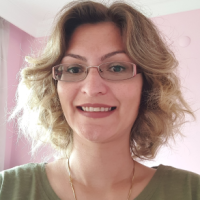
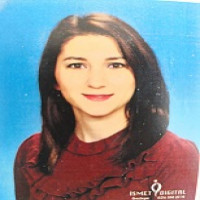
2010 yılında Bolu Abant İzzet Baysal Üniversitesi Fizik Tedavi ve Rehabilitasyon Yüksekokulu’ndan bölüm birincisi olarak mezun oldu. 2009-2010 bahar dönemi eğitimini Erasmus bursiyeri olarak Polanya Wyższa Szkoła Zarządzania i Administracji’de tamamladı. 2010-2022 yılları arasında devlet ve özel hastaneler bünyesinde fizik tedavi ve rehabilitasyon ünitelerinde fizyoterapist olarak görev yaptı. Yüksek lisans eğitimini Yeditepe Üniversitesi, Sağlık Bilimleri Enstitüsü, Spor Fizyoterapisi alanında tamamladı. Bolu Abant İzzet Baysal Üniversitesi, Sağlık Bilimleri Enstitüsü, Fizik Tedavi ve Rehabilitasyon Doktora eğitimini 2021 yılında tamamlandı. Yurtiçi çeşitli kongre ve sempozyumlara katılımcı ve konuşmacı olarak katılmıştır. Kadın sağlığı ve sporcu sağlığı alanlarında çeşitli ulusal/uluslararası akademik bildiri ve makaleler yayınladı. 2022-2024 yılları arasında İzmir Ekonomi Üniversitesi Sağlık Hizmetleri Meslek Yüksekokulu’nda öğretim görevlisi olarak görev yaptı. 2024 yılından itibaren Sağlık Bilimleri Fakültesi Fizyoterapi ve Rehabilitasyon Bölümünde Dr. Öğr. Üyesi olarak görevine devam etmektedir.
Section Editors
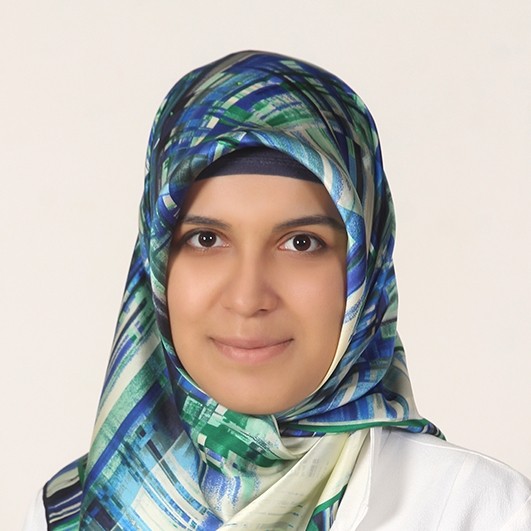
Sinem Kars 2023 yılında Hacettepe Üniversitesi Sağlık Bilimleri Enstitüsü Ergoterapi Doktora Programından mezun olmuştur. Ocak-Eylül 2025 tarihleri arasında University of Kansas Department of Occupatinal Therapy Education'da doktora sonrası araştırmacı olarak çalışmalarına devam etmektedir. Otizm, katılım, ebeveyn, iyilik hali, psikolojik sağlamlık, oyun ve oyunseverlik çalışma alanlarıdır.

Department of Maternal & Fetal Medicine

2006 yılında Adnan Menderes Üniversitesi Sağlık Yüksekokulunda Lisans eğitimini, 2010 yılında Marmara Üniversitesi Sağlık Bilimleri Enstitüsünde Doğum ve Kadın Hastalıkları Hemşireliğinde Yüksek Lisans eğitimini, 2018 yılında Eskişehir Osmangazi Üniversitesi Sağlık Bilimleri Enstitüsünde Ebelik alanında doktora eğitimini ve ikinci bir Yüksek Lisans eğitimini 2023 yılında Hacettepe Üniversitesi Sağlık Bilimleri Enstitüsünde Sağlık Bilimlerinde Simülasyon alanında tamamlamıştır. Beş yıl ebelik alanında klinik deneyimden sonra 2011 yılından itibaren Amasya Üniversitesi Sağlık Bilimleri Fakültesi Ebelik Bölümünde çalışmaktadır. 2024 yılında Doçentlik ünvanını almış hala aynı üniversitede çalışmaya devam etmektedir.
Çeşitli projelerde görev almış olup, ebeliğin birçok alanına ait yayınları yer almaktadır.

Dr. Okuyucu graduated with a bachelor's degree from the Faculty of Physical Therapy and Rehabilitation at Hacettepe University in 2011. In 2012, she received a scholarship to pursue her postgraduate education in the United Kingdom; she earned her MSc in Physiotherapy from the University of Nottingham in 2014, and completed her PhD at Loughborough University in 2019.
Since 2019, she has been working as an assistant professor in the Department of Physiotherapy and Rehabilitation at the Faculty of Health Sciences, Amasya University. Her academic interests include musculoskeletal disorders, spinal health, biomechanics, occupational health, healthcare ergonomics, patient safety, and the promotion of physical activity in public health.


Lisans eğitimi Atatürk üniversite
Klinik Deneyim Kartal Lütfi Kırdar Eğitim Araştırma hastanesi 2009-2013
Yüksek Lisans Eğitim Marmara Üniversitesi
Doktora (Bütünleşik) Ege Üniversitesi Hemşirelik Esasları

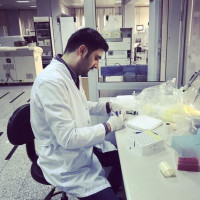
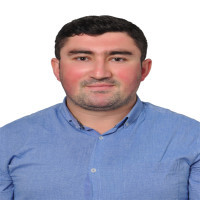





English Language Editor

Biostatistic Editor
Layout Editors


Proofreading Editor

 Web
Web
The Editorial Board

Julian is an Associate Professor at Bangor University in Wales with expertise in sport injury epidemiology. He has a BSc in Biochemistry and a MSc and PhD in Exercise Physiology. Before arriving in Bangor, he spent 8 years working as a physiologist and sport scientist within various sport performance pathways and professional sports (football, rugby union and hockey). Julian is also a member of the Institute for Applied Human Physiology and Director of the Rugby Knowledge Exchange at Bangor University. The aim of the exchange is to deliver real-world solutions to rugby, through cutting edge research and impact, high quality education and applied enterprise solutions, particularly within the area of player welfare.
Julian is the Sport Injury research lead for the Welsh Institute for Performance Science (WIPS: https://www.swansea.ac.uk/sports-science/astem/wips/); a three-way partnership between Sport Wales, Wales’ leading academic sport scientists and relevant industry partners to support multi-disciplinary, world-leading, applied performance science projects that enhance the performance of Welsh athletes and businesses.
Dr Yagiz concentrates on medical sciences and physical therapy to prevent and treat injuries and illnesses, engaging with the latest rehabilitation and assessment technologies.
He has conducted research and lectures at global institutions, including East Carolina, Bangor, Ghent, Muhammadiyah Yogyakarta, Amasya and Tokyo Metropolitan Universities.
He has a PhD in Sport, Health, and Exercise Sciences, an MSc in Exercise Rehabilitation, a BSc in Physical Therapy, and an MA in Political Science, demonstrating his interdisciplinary expertise.

 Web
Web
Mira Ambrus currently working as a senior lecturer at the Research Center for Sports Physiology of the Hungarian University of Sports Science and as researcher at the Széchenyi István University. She finished her Sport Science PhD in Spain. She lived in Switzerland for more than two years, where she completed a PhD internship at the University of Bern and she was working as a trainer. Her profile is motion analysis, gait, posture, run analysis, tool development. She is interested in personal training, rehabilitation, diplomacy, international relations, innovation and foreign languages. She is fluent in English,Italian,Spanish and intermediate in German.
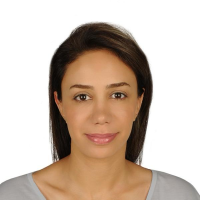

Eylem Küçük completed her undergraduate education in the Department of Physical Therapy and Rehabilitation at Dokuz Eylül University in 2006. She completed her master's degree at the Istanbul Okan University Health Sciences Institute in 2017 and her doctorate in Orthopedic Physiotherapy and Rehabilitation at the Hacettepe University Health Sciences Institute in 2024. She received osteopathy training for five years and completed it in 2013. She works in various areas of orthopedic physiotherapy, primarily scoliosis and jaw joint problems.




2010 yılında Bolu Abant İzzet Baysal Üniversitesi Fizik Tedavi ve Rehabilitasyon Yüksekokulu’ndan bölüm birincisi olarak mezun oldu. 2009-2010 bahar dönemi eğitimini Erasmus bursiyeri olarak Polanya Wyższa Szkoła Zarządzania i Administracji’de tamamladı. 2010-2022 yılları arasında devlet ve özel hastaneler bünyesinde fizik tedavi ve rehabilitasyon ünitelerinde fizyoterapist olarak görev yaptı. Yüksek lisans eğitimini Yeditepe Üniversitesi, Sağlık Bilimleri Enstitüsü, Spor Fizyoterapisi alanında tamamladı. Bolu Abant İzzet Baysal Üniversitesi, Sağlık Bilimleri Enstitüsü, Fizik Tedavi ve Rehabilitasyon Doktora eğitimini 2021 yılında tamamlandı. Yurtiçi çeşitli kongre ve sempozyumlara katılımcı ve konuşmacı olarak katılmıştır. Kadın sağlığı ve sporcu sağlığı alanlarında çeşitli ulusal/uluslararası akademik bildiri ve makaleler yayınladı. 2022-2024 yılları arasında İzmir Ekonomi Üniversitesi Sağlık Hizmetleri Meslek Yüksekokulu’nda öğretim görevlisi olarak görev yaptı. 2024 yılından itibaren Sağlık Bilimleri Fakültesi Fizyoterapi ve Rehabilitasyon Bölümünde Dr. Öğr. Üyesi olarak görevine devam etmektedir.





